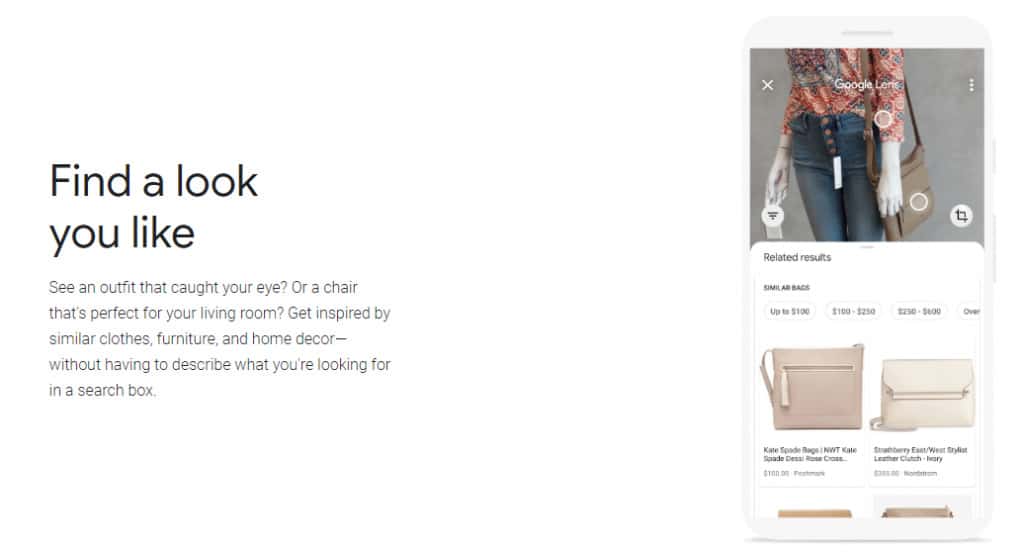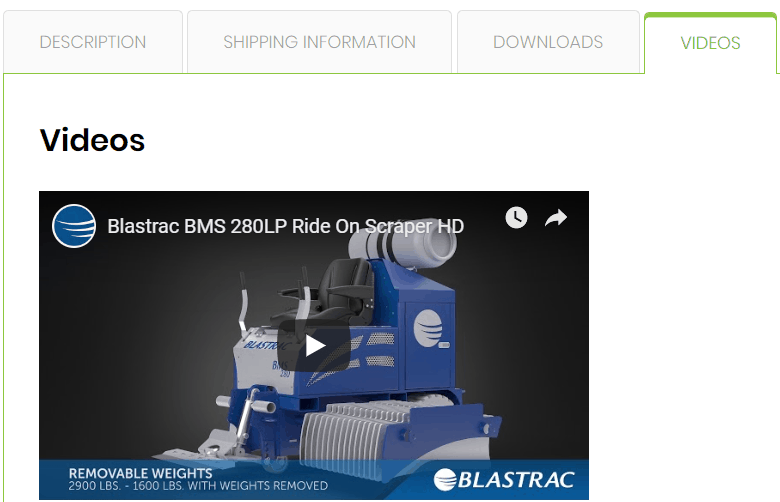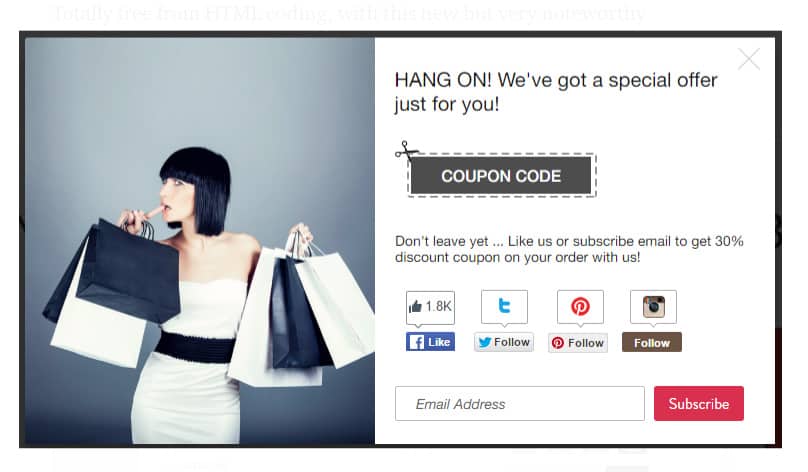Like every aspect of web design, ecommerce trends come and go. As technology continues to move at a rapid pace, we’re seeing some really incredible features become commonplace on ecommerce sites.
If you want your site to be at the forefront of the latest trends, here are the leading ecommerce website features to implement in 2020:
Top Ecommerce Trends for 2021
Augmented Reality
Augmented reality (AR) is a rapidly developing technology that seamlessly blends digital elements into the real world. Through a smartphone, AR superimposes digital images into a user’s view of the real world, providing users with a more interactive experience.
How can this help your ecommerce website? By superimposing your products into their view, your customers will know exactly how that product will work for them, whether it’s “trying on” an outfit or seeing if a chair will fit in their living room. Because your customer already can see how the features of the product (size, scale, color) will work for them, you’ll see increased sales and also better product reviews and fewer returns! Skincare and cosmetics retailer, Sephora, has leveraged this technology with their Virtual Artist to showcase new colors and brands to drive their online sales to great success.
360° Product Images
360° product images bring an element of physical shopping to the online experience by allowing your customers to see a product from every angle. A camera is mounted on a tripod, while the product is placed and rotated on a turntable, then the images are edited with a video player to create the interactive 360° view. It’s a surprisingly simple opportunity to provide a high-end online shopping experience for your customer that’s ideal for furniture, apparel, and decorations!
Product Photo Search
Google Lens uses artificial intelligence that allows users to point their phone’s camera toward an item, like a plant or a purse, and ask Google Assistant what they are looking at. Not only will they receive information about what type of plant or brand of purse they’re seeing, it will direct them to an ecommerce site or nearby retailer where they can make a purchase. Originally created for the Google Pixel, this app is now widely available across numerous smartphones.
You can take advantage of Google Lens technology by adding high-quality product images to your ecommerce website combined with optimized product descriptions that include brand names and keywords to ensure that you are the recommended retailer.
Image: https://lens.google.com/
Image Search
While not as technologically advanced as AI-operated Google Lens, traditional image search is growing in popularity for shoppers. Simply taking a photo and using Google’s image search, users can find what they’re looking for. Conversely, when a user looks up a product or item, image search is embedded in the search engine algorithm.
This is why optimizing your product images is an essential part of ecommerce SEO. It gives you a better opportunity to increase the amount of front page real estate you have on search engine results, driving more traffic to your website.
Product Videos
While high-quality images are important, product videos can provide that added push to convince a shopper to click “Add to Cart.” Professionally shot videos give customers a more in-depth look at how the item works, whether it’s determining how an article of clothing fits and moves on a real person to seeing how a power tool actually operates.
Beyond providing more information, videos are used to build trust with your audience. As customers seek out businesses they can connect with, using product videos gives you a great opportunity to share what sets your business apart, what makes your products unique, and how it will benefit them.
As product pages that offer videos have significantly higher conversion than similar pages with just images, adding video content may be one of the most essential ecommerce trends to adopt for your website.
Social Login
One of the biggest deterrents to completing a purchase is a complicated checkout process (second only to high shipping rates and hidden fees). Shoppers now expect to make purchases fast, without worrying if they have a credit card with them or having to fill out multiple forms.
Adding a social login to your ecommerce site is a solution to this issue. By quickly logging in through Facebook or Google, shoppers can create an account that includes a shipping address and payment information. Not only does this save time, but shoppers trust that using social login is secure, building trust in your website. Both of these lead to increased sales for you.
Pay with Amazon
If we’re talking ecommerce trends, we have to mention Amazon. Amazon has almost 50 percent of ecommerce market share. Consider that 60 percent of online shoppers say they would purchase more online if there was better security and around 80 percent of shoppers feel inconvenienced by having to register for every website they want to make a purchase from.
This is where Amazon Pay comes in. By integrating Amazon Pay onto your website, your customers can make purchases to your site through their Amazon account. This offers the double benefit of saving your shoppers time while providing them with the secure shopping experience they want.
Design with Mobile Intentions
According to a study by Statista in 2019, 73 percent of all ecommerce sales will take place on a mobile device. Is your current ecommerce website providing a convenient, enjoyable shopping experience for smartphone and tablet users?
When designing a website, it’s necessary to run QA on both mobile and desktop. Things that work fine to a desktop user – longer product descriptions, large images, and page load speeds – don’t translate well to a mobile experience. Designing a website intended for mobile users is an ecommerce trend that will continue for years to come.
Flat Design
Flat website design is a type of user interface that emphasizes a minimalist approach of stylistic elements in order to provide more of a two-dimensional (or flat) appearance. Websites with this design utilize drop shadows, flat colors and gradients, and stripped-down elements.
Why is it so popular? Not only is a minimalist style a classic look, flat design offers an improved user experience through faster load times and easier user navigation.
Discovery Ads
Google took a page from Facebook and created a Discover feed – providing users with stories and articles based on their recent searches and interests. With a reach of roughly 800 million people, Google Discovery has high visibility and high engagement, especially because it’s displaying content to a qualified audience.
Now, with Google Discovery Ads, ecommerce ppc advertising goes to the next level with immersive, interactive ads that allow users to display their own product images within the ad. While this is one of the newest technologies on the list, the potential for conversion from Discovery Ads is huge!
QR Codes and Barcode Scanners
Quick response codes, or QR codes are not a new technology, but they are rapidly growing in popularity as they provide shoppers with new opportunities to learn more about a product, do price comparisons, and determine if something is in stock. If you have both a brick and mortar store with an ecommerce store, you can leverage QR codes by attaching them to your physical products – when a customer scans the code, they’ll see additional product information plus suggested items. In a home goods store, scanning a couch could open up to showing matching accessories and design ideas, whereas scanning a shirt in a clothing store would show matching pants, shoes, and accessories.
For 100 percent ecommerce businesses, you can print QR codes and mail them with customer packages to include things like surprise discount codes or special promotions with recommended items.
In-Store Pickup
Another growing trend for brick-and-mortar stores with an ecommerce website is in-store pickup. This blends the best of both worlds for many customers – the convenience of shopping from a smartphone while getting it the same day. Big box stores like Kohl’s and Target and grocery stores like Kroger, Meijer, and H-E-B are already using this feature, and its popularity means this ecommerce trend is only going to grow in 2020 and beyond.
Fast and Free Shipping
With over 100 million Amazon Prime members all receiving free 2-day, and in some cases one day or even same-day shipping, more companies are offering free shipping in order to stay competitive to the point where free shipping is the norm.
This trend is extending to small online stores, who, while they may not offer carte blanche free shipping like Amazon Prime members or Target Red Card holders get, they can offer gateways to free shipping – like free priority shipping on orders over $30. High shipping rates and surprise fees at checkout are the leading cause for abandoned carts, so offering free shipping leads to a higher conversion.
Related Items
Displaying related items is the digital version of upselling, that tried-and-true sales tactic in which the seller recommends additional products to customers who are already interested in one of your items. (Think: “Do you want fries with that?” – classic upselling)
While online shopping doesn’t have a salesperson to offer related products, you can put your website to work for you by having related or similar products display when someone is looking at an item or has already placed it in their cart. For example, if a customer puts wine glasses in their cart, a “recommended for you” display of wine charms, corkscrews, or wine bottle stoppers could inspire an additional purchase (and additional revenue for your store!
It doesn’t even have to be a complimentary item. It could be a variety of similar items to what they are browsing. Offering additional options means that if the shopper isn’t in love with what they find, they don’t have to go to another retailer. Here’s what happened when I looked at Nike Revolution 4 running shoes on Amazon.
Groupable Wishlists
Wishlists are a great feature to have on your website because it lets your shopper keep a running tab of what they are interested in, instead of forgetting about it. Making wishlists shareable is even better because it allows your shopper to give friends and family gift ideas. Parents especially take advantage of shareable wishlists because when family members ask “What can I get the kids for the holidays?” sharing the wishlist makes life so much easier on everyone! However, homeowners can use wishlists to determine furniture and decor, and couples can collaborate with each other while individuals can plan seasonal wardrobes!
Marketing Automation
Marketing automation is an ecommerce trend that can specifically make your life easier! Using marketing software like Hubspot allows you to create email campaigns, ads, and social media campaigns weeks in advance and schedule them to go out on your timeline. You can also take it to the next step by using marketing automation to create a personalized experience for your customers. For example, Hubspot allows you to create email marketing sequences that are triggered by certain customer reactions, such as signing up to your email list or abandoning their cart, or you can create custom coupons and promotions based on your customer demographics.
A study from infosys illustrated how 31 percent of online shoppers wish their shopping experiences were more personalized. However, as a business owner, actively reaching out individually to each customer is seldom possible. However, marketing automation allows you to fulfill your customers’ need for a custom experience, making it a growing ecommerce trend as we move into 2020.
Pop ups
In the early days of the internet, pop-up ads were the bane of every internet user’s existence. They were generally random and had nothing to do with the site you were looking at, and they were impossible to get rid of.
The thing is, pop-ups, when used correctly, are a powerful tool that more ecommerce websites are implementing to capture newsletter subscribers, share promotions, and prevent customers from leaving a site by sharing important information. Pop-ups can even be automated by your shoppers’ actions, such as when the mouse is headed toward the X icon to leave the site or if there is a long period of no movement or action.
Bring Ecommerce Features to Your Store!
If you want to overhaul your ecommerce store,TheeCommerce is here to help! We specialize in building, designing, and marketing ecommerce websites using top platforms like WooCommerce and Shopify. Let’s run a free website audit for your online store and discover exactly how you boost visibility and sales! Reach out to us today at 919-342-8230 or fill out our contact form to get started!












